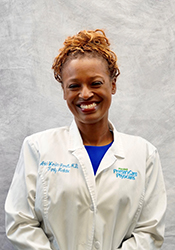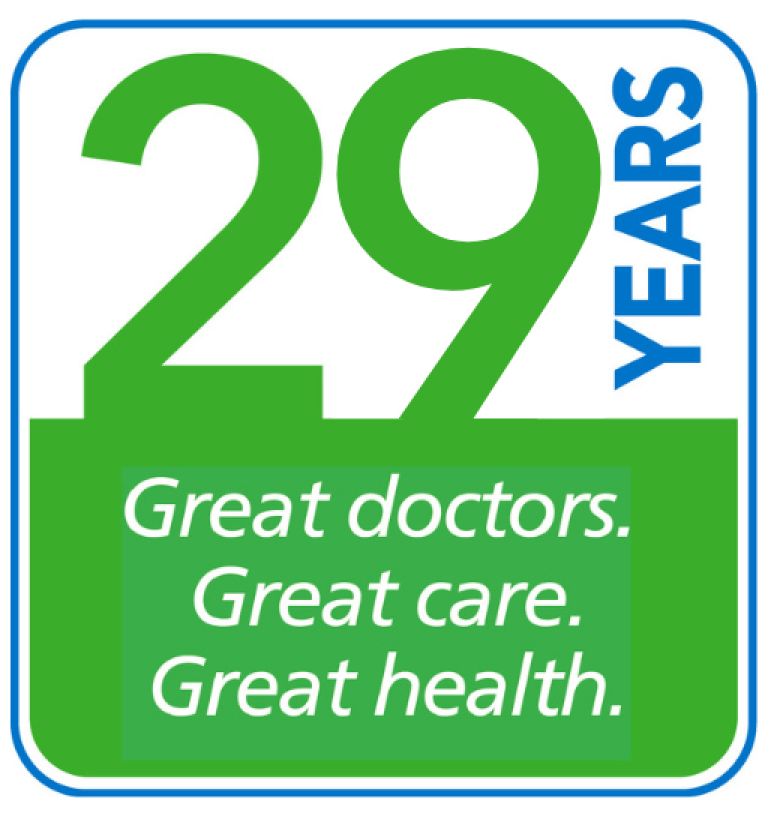Category Archives: Health & Wellness
Telemedicine: Evenings, Weekends, and Daytime Hours
By: ARIEL WARDEN-JARRETT, M.D.
Did you know that since the start of the pandemic, MPCP created ways to be more available to meet your medical needs? MPCP offers telemedicine visits to enable you to get medical care right in the comfort of your own home. This not only lowers your risk of being exposed to the coronavirus but offers a very convenient way of getting care. Telemedicine allows you and your provider to see each other while you talk together. It can be scheduled during regular office hours, but after-hours and weekend appointments are also available.
What equipment do I need for a telemedicine visit?
You just need your smartphone, an iPad, or a home computer with a camera and microphone. MPCP uses Zoom and a few other HIPAA-safe apps to connect with patients.
Is telemedicine really effective?
Most of our patients say it works very well for most appointments. Your doctor will listen to your symptoms and ask questions, just as if you were in one of our exam rooms. Using video, your doctor will be able to see things that will help make a diagnosis. But if there is a concern at the end of your visit that something is still unclear, your doctor will have you come into the office as safely as possible for a face-to-face evaluation.
Can I get a prescription filled from the visit?
Yes, your provider can send any necessary prescriptions to your pharmacy electronically. If you need blood tests, X-rays or other tests, your provider will arrange for you to get them safely.
How do I schedule a telemedicine visit?
You can simply call your MPCP office to schedule a telemedicine visit. If you prefer a particular video platform, just let the scheduler know when you make your appointment. Otherwise, a medical assistant will call you before your appointment to help you connect. You may also be advised to collect your medication bottles, gather information such as your blood sugar or blood pressure logs, and to take your temperature or weigh yourself prior to your visit.
What about after-hour appointments?
MPCP offers evening and weekend telemedicine visits for acute care (illness) to better fit your schedule. Appointments can be scheduled Monday to Friday 3 pm -9 pm, and Saturday and Sunday 10 am – 4 pm. Call 410-729-3368 to schedule an after-hours telemedicine appointment, or see this video to learn more.
Will my insurance cover telemedicine visits?
Yes, insurance companies are encouraging doctors to connect with their patients through telemedicine. However, deductibles and co-pays may be applied. You should check with your insurance company as it relates to your specific coverage.
 Dr. Warden-Jarrett is a Maryland Primary Care Physicians, LLC partner and is certified by the American Board of Family Medicine. She holds her medical degree from George Washington University School of Medicine and Health Sciences, and sees patients in the Bowie office.
Dr. Warden-Jarrett is a Maryland Primary Care Physicians, LLC partner and is certified by the American Board of Family Medicine. She holds her medical degree from George Washington University School of Medicine and Health Sciences, and sees patients in the Bowie office.
Racial Disparity in Breast Cancer
By: TRACY JANSEN, M.D.
Breast cancer rates among white women are higher than those for minority women, but black women are more likely to die from breast cancer. This article explains racial disparities in breast cancer and ways women can reduce their risk.
The basics of breast cancer
Breast cancer is a disease that causes cells in the breast to grow out of control. Breast cancer is the second most common cancer in women in the U.S. (after skin cancer). Deaths from breast cancer have declined over time, but remain the second leading cause of cancer death among women overall and the leading cause of cancer death among Hispanic women. Black women are 40% more likely to die from breast cancer than white women.
What puts you at risk
Your risk for breast cancer is due to a combination of factors. Some are lifestyle issues ‒ such as lack of exercise, obesity, and alcohol use ‒ but the two main factors are ones you can’t control: being a woman and getting older. Most breast cancers are found in women who are 50 years old or older. Your risk is also higher if you have a family history of breast or ovarian cancer.
Differences in breast cancer by race
- White women are slightly more likely to develop breast cancer than black, Hispanic and Asian women.
- Among older women, white women have higher rates of breast cancer compared to black women.
- Black women are more likely to develop more aggressive, more advanced-stage breast cancer that is diagnosed at a young age.
- Black women are more likely to have breast cancer diagnosed later when treatment options become limited and the survival rate is poor.
- Genetic factors may make black women more susceptible to certain types of cancer.
- Lifestyle factors – such as being overweight and not exercising – are linked to higher risk.
- High rates of type 2 diabetes in black women may be a factor. Women who had been diagnosed with diabetes at least five years prior to their breast cancer diagnosis were almost twice as likely to die of the breast cancer.
- Economic factors, such as lack of health insurance, limited access to medical care, and lack of access to nutritious foods, may contribute to higher cancer risk in minority women.
- Women who don’t breastfeed are at higher risk. Breastfeeding rates are lower among blacks than whites.
While there may be some factors you can’t control, such as a family history of breast cancer, there are steps you can take to lower your risk, whatever your race:
- Maintain a healthy weight. Ask your doctor about healthy ways to do this.
- Be physically active. Most healthy adults should aim for at least 150 minutes a week of moderate aerobic activity or 75 minutes of vigorous aerobic activity weekly.
- Limit alcohol. Limit yourself to no more than one drink a day, as even small amounts increase risk.
- Breast-feed. The longer you breast-feed, the greater the protective effect.
- Limit postmenopausal hormone therapy. Talk with your doctor about the risks and benefits of hormone therapy.
- Get screened. The American Cancer Society recommends women 45 to 54 get mammograms every year, and women 55 and older get them every one to two years.
Learn more about breast cancer and what you can do to lower your risk.
 Dr. Jansen is an MPCP partner and is certified by the American Board of Family Medicine. She cares for patients at the Pasadena office.
Dr. Jansen is an MPCP partner and is certified by the American Board of Family Medicine. She cares for patients at the Pasadena office.
Double Trouble: Flu Season and COVID-19
By: LAUREN BOND, CRNP
The annual flu season is expected to begin this month with the onset of cold weather. And for the second year, COVID-19 is likely to be spreading at the same time, making this flu season an especially dangerous time.
Flu – short for influenza – is a common virus that infects millions of Americans each year. For most people, the flu isn’t dangerous, but people over 65, young children, pregnant women, and people with chronic medical conditions are at greater risk for serious complications, such as pneumonia and sepsis.
The flu vaccine is the best way to prevent the flu. This season, all flu vaccines are designed to protect against the four strains of the flu virus that are expected to be the most common. The vaccine is not 100% guaranteed to prevent the flu, but it greatly lowers your risk. The CDC recommends that everyone 6 months or older get the shot before the end of October.
See the CDC Influenza Map to track the severity of flu in Maryland.
Flu and the Coronavirus
It’s not possible to be sure what will happen in the fall and winter, but the CDC says it’s likely that flu viruses and the coronavirus will both be spreading at the same time. With COVID-19 prevention measures (such as stay-at-home orders and mask mandates) being relaxed, this may result in more COVID-19 cases during flu season.
It’s possible for a person to be infected with the flu and COVID-19 at the same time, and the results can be very serious, especially for people older than 65 or with certain medical conditions. Flu and COVID-19 are both respiratory illnesses and share some of the same symptoms ‒ such as a fever, cough, and runny nose ‒ so testing may be necessary to tell which disease a person has.
The best way to prevent a double flu/COVID infection is to make sure you are vaccinated for both the flu and COVID-19. MPCP can give patients the flu and COVID-19 vaccines at the same time for the best possible protection.
Next steps
- All MPCP offices now have the flu vaccine, so make an appointment to get your shot.
- Think you may have the flu? Check your symptoms.
- If you get the flu, antiviral drugs can be used to treat your illness. They can’t cure the flu, but they can make your illness milder and shorter. Ask your doctor about antiviral drugs.
 Lauren Bond, Certified Registered Nurse Practitioner, cares for patients in MPCP’s Queenstown office. She is board certified by the American Nurses Credentialing Center in Family Practice.
Lauren Bond, Certified Registered Nurse Practitioner, cares for patients in MPCP’s Queenstown office. She is board certified by the American Nurses Credentialing Center in Family Practice.
COVID-19 Update: How It Affects You
By: MEDICAL DIRECTORS FALANA CARTER, MD and JERRY I. LEVINE, MD, PA
COVID-19 continues to spread in Maryland. Individuals who remain unvaccinated are at the greatest risk of contracting and spreading COVID-19 including highly contagious variants resulting in hospitalization and death. The Centers for Disease Control and Prevention’s latest guidance recommends booster vaccines for adults over 65, those with high-risk medical conditions, and individuals at risk for COVID-19 exposure and transmission due their occupation or institutional settings. The Johnson & Johnson/Janssen vaccine has been approved for a booster after two months. The Pfizer vaccine is available for children 12 and older, and soon will be approved for children 5 years and older. Here’s how the latest COVID-19 news affects you.
The Delta variant
Like many other viruses, the coronavirus (SARS-CoV-2) continually changes, producing new strains with features different from the original virus. The Delta variant is the most common form of the virus in the U.S. today and is very dangerous, causing most new COVID-19 infections. Here’s what you should know:
- The Delta variant is significantly more contagious than previous variants, infecting many more people.
- The Delta variant appears to cause more severe illness in unvaccinated people than previous variants, leading to more hospitalizations and deaths.
- COVID-19 vaccines are very effective in preventing Delta infections, and the vast majority of new hospitalizations and deaths are in unvaccinated people.
- Fully vaccinated people can get “breakthrough” Delta infections, but they are rare and are generally less severe than in unvaccinated people.
- Fully vaccinated people with Delta breakthrough infections can spread the virus to others, but vaccinated people appear to be contagious for a shorter period of time.
Booster shots
COVID-19 vaccines remain highly effective against the virus months after vaccination, but their effectiveness will decrease over time. The effectiveness of the vaccine is enhanced by getting a booster shot. Based on CDC recommendations, these groups are eligible for booster vaccines:
- Adults 65 or older who received two doses of the Pfizer-BioNTech or Moderna vaccine at least six months ago
- Adults 18-64 with underlying high-risk medical conditions
- Adults 18-64 who are at increased risk for COVID-19 exposure and transmission due to their work or institutional settings
- All adults 18 or older who received the single-dose Johnson & Johnson/Janssen vaccine at least two months ago
Also, individuals with compromised immune systems are eligible for a third dose of the Pfizer-BioNTech or Moderna vaccine at least 28 days after the first two doses.
Boosters may be “mixed and matched,” heterologous dosing. While preference remains to obtain the same booster as the primary vaccine, either Moderna or Pfizer can be received as a booster for the Johnson & Johnson/Janssen vaccine. This can be discussed with your primary care provider.
MPCP administers the Moderna and Johnson & Johnson/Janssen vaccines in our offices, and many of our offices will also offer the Pfizer-BioNTech vaccine starting November 1.
Call your MPCP office to schedule an appointment to receive a booster dose. Vaccines are also available at your local pharmacy or health department clinic.
COVID vaccines for children
The CDC is recommending COVID-19 vaccination for children 12+. Here’s the latest:
- Fewer children have been infected with COVID-19 than adults, but they can still get sick from the virus and spread it to others.
- CDC recommends everyone 12 years and older should get a vaccination to protect them and help prevent the spread of COVID-19.
- The two-dose Pfizer-BioNTech vaccine has been shown to be safe and effective for children 12+. As with adults, serious side effects from the vaccine are rare in children, and the benefits of vaccination greatly outweigh the potential risks.
If you have questions about COVID-19 or the vaccine, contact your MPCP doctor or visit Maryland’s covidLINK website.
Dr. Levine is an MPCP partner and is certified by the American Board of Internal Medicine. He serves as MPCP’s Medical Director and Vice President, and sees patients in the Columbia office.
Dr. Carter is an MPCP partner and is certified by the American Board of Family Physicians. She serves as Assistant Medical Director and sees patients in the Arundel Mills office.




